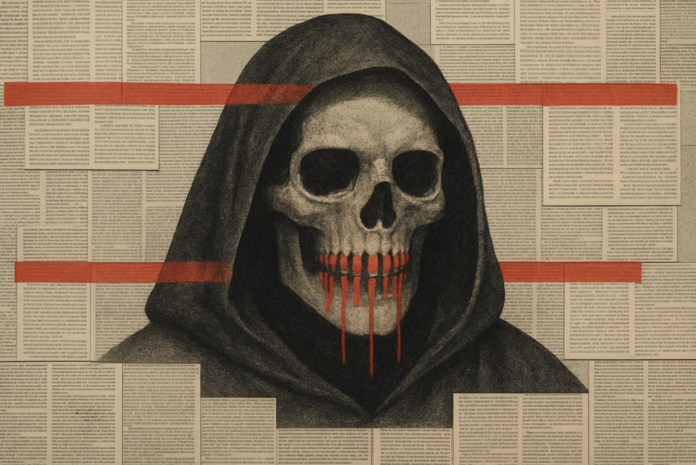Final Destination: Bloodlines (2025 by Zach Lipovsky and Adam Stein) is part of a franchise that has entertained and grossed out fans since entering popular culture consciousness at the beginning of the 21st century. These movies take a deeper look into American culture rather than just a plethora of creative ways to die.
The latest addition, Final Destination: Bloodlines, traces a genealogy of death, catching up to those who initially escaped its grip. It is a hilarious take to situate death as a genetic inheritance, but one must suspend one’s disbelief when watching this franchise and enjoy the jolts and the gore.

If anything, Final Destination: Bloodlines demonstrates American exceptionalism, not just through the marvelous wizardry of filmmaking and blood and guts but also through the undergirding of what makes America what it is. What is exceptionalism but the sheer power of self-belief to expand, go beyond, and conquer?
Final Destination: Bloodlines is the shadow of this exceptionalism, which is mired in a convoluted web of conspiracy theories that drives its adherents and believers into hunkering down, refusing to budge, and amassing an armory to survive.
Why else would doomsday preppers (people who overly prepare for what they think is the end of civilization with fortified bunkers and supplies of food) be mainly an American thing? This is precisely what Final Destination movies are: a hunkering down against death. Is it so American to defy even death itself?
In the movie, they discuss “death’s hit list.” This is part of American exceptionalism, which assumes that you are special, that death follows you with a promised elaborate eradication. Never mind the sheer fact that everyone dies. The scariest part is that death is random and not some extensive infographic on who is next with what kind of death.
Death stalking the characters amidst the gloriously bucolic suburbia disrupts such exceptionalism. The manicured lawns, the towering high-rise restaurants, and the well-furnished and clean hospitals are tenets of the American cultural landscape informed by the dream of success.
The pivotal moment of the movie, which was also featured in the trailer, is the destruction of a brand-new high-rise restaurant with tempered glass floors. The setting was in the 1960s, an interesting time when this galvanized the ascent of American exceptionalism with its glut of skyscrapers.
Though skyscrapers became prevalent in the early 20th century, the post-World War II United States reached the zenith of the American dream in terms of wealth and edifice spectacle. It is a great detail that the people were dancing over the glass floors as if floating above, clearly a defiance.
Another fantastic sequence in the movie features the very Norman Rockwell portrait of an updated American family at a backyard picnic. Funny that the implement of death is a lawnmower, which is the tool for manicured lawns that are symbols of the cultural geography of having made it in the US. Such locations of Americanness (the skyscraper and the backyard) are disrupted by death. But is it fair to mark death as a disruption when it is the most natural thing in life?
Is the American dream ultimately to live in middle-class luxury where death is an option? See how that works in this crazy and funny—yes, hilarious—because of the sheer absurdity of Final Destination: Bloodlines.
You may reach Chong Ardivilla at kartunistatonto@gmail.com or chonggo.bsky.social









